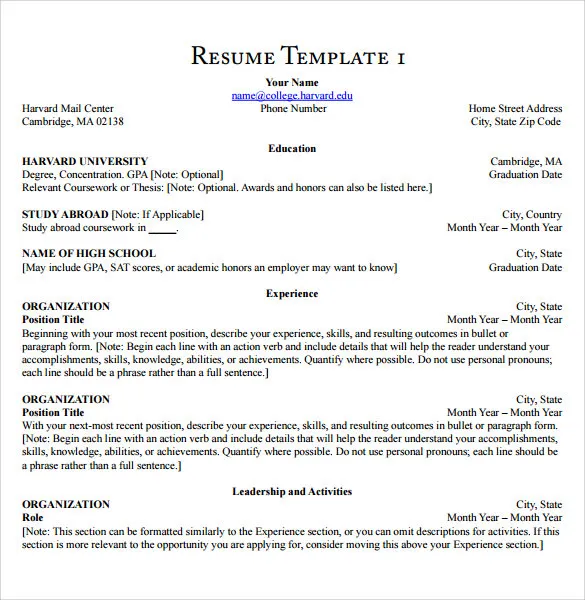Understanding the Job Search Cover Letter
The job search landscape is competitive, and a well-crafted cover letter can significantly increase your chances of landing an interview. It’s more than just a formality; it’s your first impression, a chance to showcase your personality, and demonstrate why you’re the perfect fit for the role. Understanding the nuances of a cover letter is the first secret to success. This means recognizing its purpose and how it differs from your resume. The cover letter provides context, connecting your skills and experiences to the specific requirements of the job. It’s where you can tell your story and explain your motivations.
What is a Cover Letter (and Why You Need One)
A cover letter is a document accompanying your resume, serving as an introduction to potential employers. It provides a concise overview of your qualifications and expresses your interest in a specific position. While your resume lists your skills and experience, the cover letter tells the story behind those qualifications. Many applicants often overlook the significance of a cover letter, mistakenly believing that a strong resume is sufficient. However, a well-written cover letter provides context, clarifies your career goals, and demonstrates your enthusiasm for the opportunity. It showcases your personality and communication skills, which are crucial in today’s job market. In essence, it’s your opportunity to make a memorable first impression and set yourself apart from other applicants.
Key Components of a Job Search Cover Letter
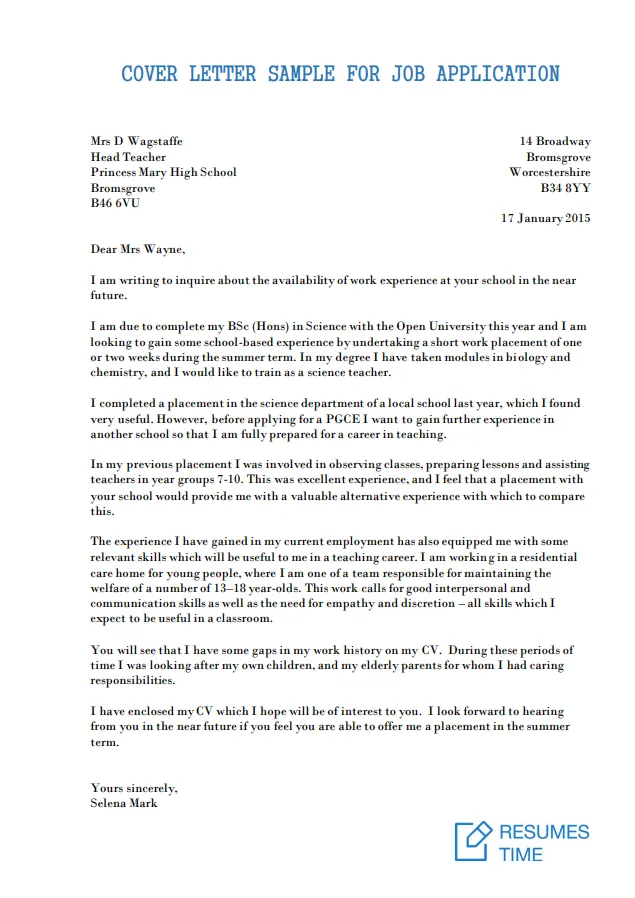
A compelling cover letter includes several key components. Start with a professional heading, including your contact information and the date. Then, address the hiring manager by name whenever possible, showing that you’ve done your research. The body of your letter should be structured into three main sections. Firstly, an engaging introduction that captures the reader’s attention and states the position you’re applying for. Secondly, a section that highlights your relevant skills and experiences, providing specific examples and quantifying your achievements whenever possible. Finally, a strong closing that reiterates your interest, expresses your enthusiasm for an interview, and includes a call to action. Maintain a professional tone throughout, using clear, concise language.
How to Write a Cover Letter That Grabs Attention
To make your cover letter stand out, you need to capture the reader’s attention from the start. Avoid generic opening lines like ‘I am writing to express my interest…’ Instead, start with a compelling hook. You can mention a recent accomplishment, highlight a mutual connection, or express your excitement about the company. Briefly explain why you’re interested in the specific role and company, showing that you’ve done your research. Throughout the letter, use action verbs and focus on your achievements rather than just listing your responsibilities. Quantify your accomplishments whenever possible to demonstrate the impact of your work. For instance, instead of saying ‘Managed social media,’ say ‘Increased social media engagement by 30% in six months.’
Formatting Your Cover Letter for Success
Formatting is crucial for readability. Use a professional font like Times New Roman, Arial, or Calibri, with a font size between 10 and 12 points. Maintain consistent margins (typically one inch on all sides) and use single-spaced paragraphs with a blank line between each paragraph. Keep your cover letter concise, ideally no more than one page. Use bullet points or numbered lists to highlight key skills or achievements, making the content easy to scan. Ensure your letter is visually appealing and well-organized. Before submitting, proofread meticulously for any typos or grammatical errors. A well-formatted letter demonstrates professionalism and attention to detail, which are highly valued by employers.
Crafting a Compelling Opening
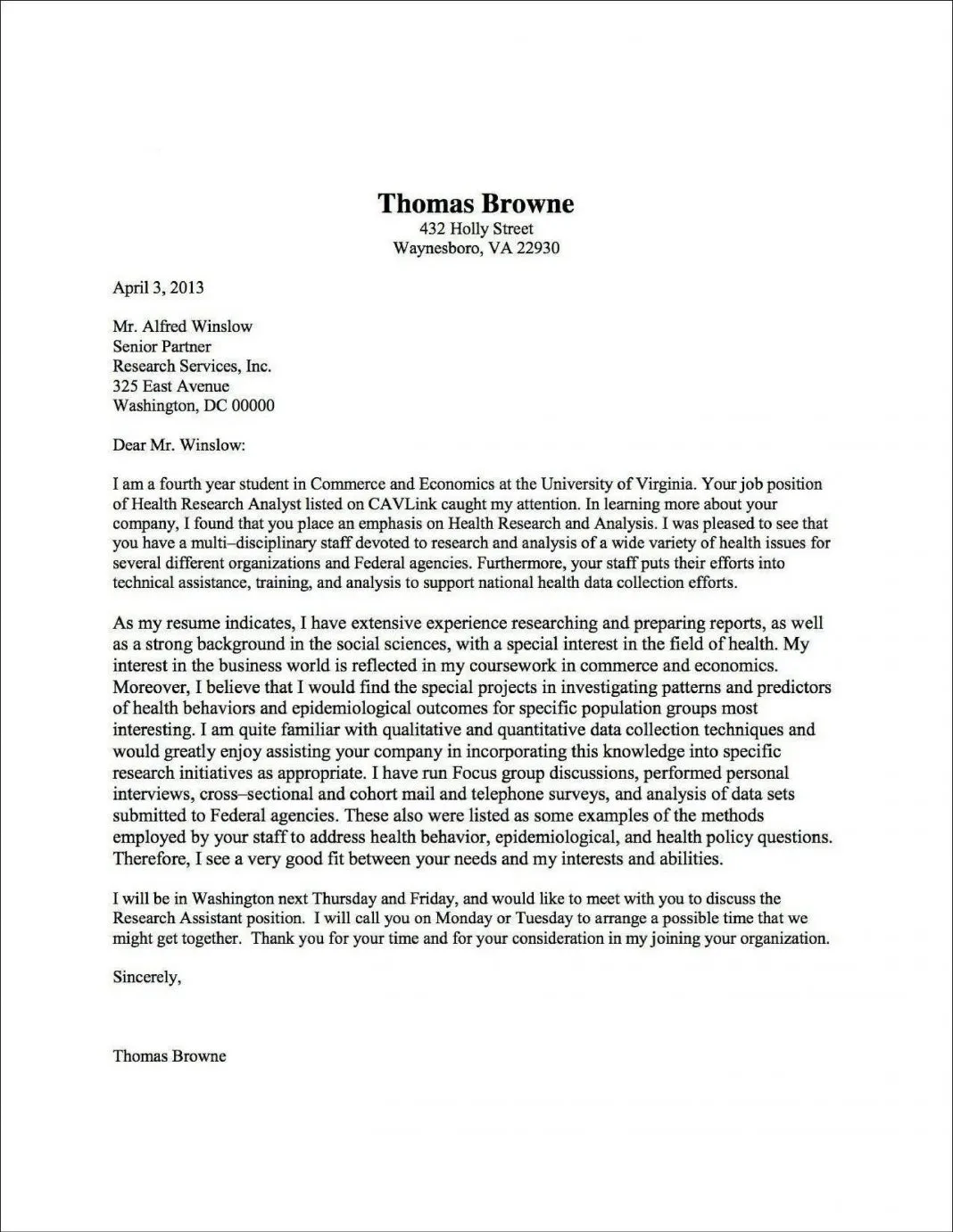
The opening of your cover letter is your chance to make a strong first impression. Avoid generic openings and opt for something that immediately grabs the reader’s attention. Start with a statement that reflects your enthusiasm for the role or the company. You could mention a recent accomplishment that aligns with the job requirements or highlight a mutual connection. Always state the specific position you’re applying for to eliminate any ambiguity. If you are applying for a job at a certain company, it is imperative that you show you have done your research about them. For instance, did they release a new product? Or did they win an award? Mentioning these details demonstrates that you are interested in the company and the position.
Highlighting Your Skills and Experience
In the body of your cover letter, focus on highlighting your relevant skills and experience. Align your qualifications with the specific requirements of the job description. Use action verbs to describe your accomplishments and provide concrete examples of how you’ve demonstrated those skills in the past. Instead of simply listing your responsibilities, quantify your achievements whenever possible. For example, instead of saying, ‘Managed a team,’ state ‘Led a team of 10 employees, increasing productivity by 15%.’ This approach adds credibility and shows the value you can bring to the role. Tailor your letter to each job you apply for, emphasizing the skills and experiences most relevant to that particular position.
Tailoring Your Cover Letter to the Job
One of the most important secrets to a successful cover letter is tailoring it to the specific job and company. Don’t send out a generic cover letter for every application. Instead, carefully review the job description and identify the key skills, experiences, and qualifications the employer is seeking. Then, customize your cover letter to align with those requirements. Highlight the relevant skills and experiences you possess and provide specific examples of how you’ve demonstrated those skills in the past. This shows the hiring manager that you’ve taken the time to understand their needs and that you’re a good fit for the role. Mention the company’s values, mission, or recent achievements to show that you’ve done your research and are genuinely interested in the opportunity.
Showcasing Your Achievements
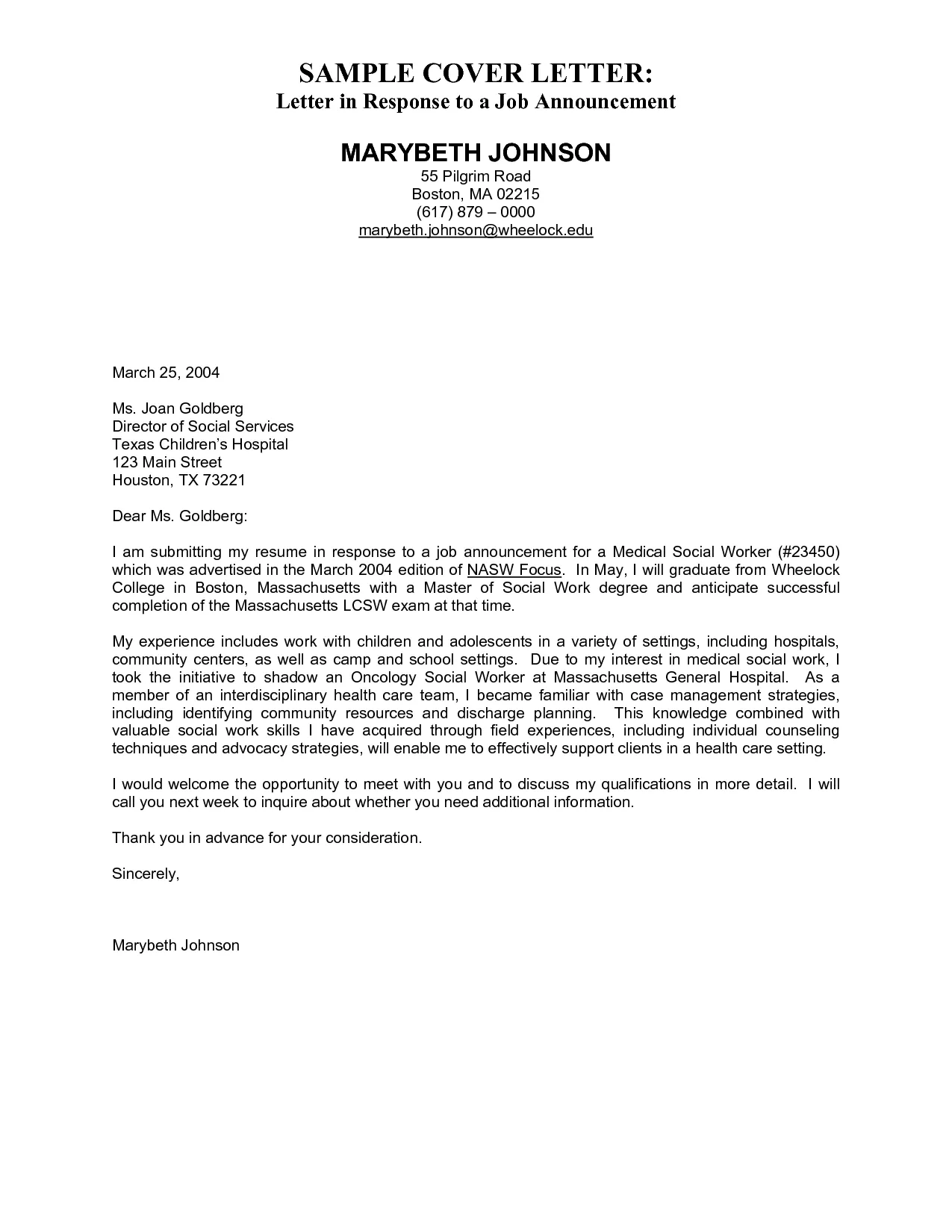
Instead of simply listing your duties, focus on showcasing your achievements. Provide specific examples of how you’ve made a positive impact in your previous roles. Quantify your accomplishments whenever possible to demonstrate the value you bring. For example, instead of saying, ‘Improved customer satisfaction,’ state ‘Increased customer satisfaction scores by 20%.’ Use the STAR method (Situation, Task, Action, Result) to structure your examples. Describe the situation you were in, the task you were assigned, the actions you took, and the results you achieved. This method provides a clear and concise way to showcase your skills and experience. Highlighting your achievements helps you stand out from other applicants and demonstrates your ability to deliver results.
Writing a Strong Closing
The closing of your cover letter is your final opportunity to make a positive impression. Reiterate your interest in the position and express your enthusiasm for the opportunity. Thank the hiring manager for their time and consideration. Include a clear call to action. This might involve stating that you’re eager to discuss your qualifications further in an interview or that you’re available for a call. End with a professional closing, such as ‘Sincerely’ or ‘Best regards,’ followed by your typed name. Make sure your contact information is readily available so the recruiter can quickly reach you. Ensure that you proofread everything, and keep it short and sweet.
Cover Letter Do’s and Don’ts
There are several crucial do’s and don’ts to keep in mind when writing a cover letter. Do tailor your letter to each job, highlighting the relevant skills and experiences. Do use action verbs and quantify your achievements. Do proofread your letter carefully for any typos or grammatical errors. Do address the hiring manager by name whenever possible. On the other hand, don’t use generic opening lines. Don’t simply rehash your resume; provide context and tell your story. Don’t include unnecessary information or irrelevant details. Don’t send a cover letter without proofreading. Following these do’s and avoiding these don’ts will significantly increase your chances of success.
Mistakes to Avoid in Your Cover Letter
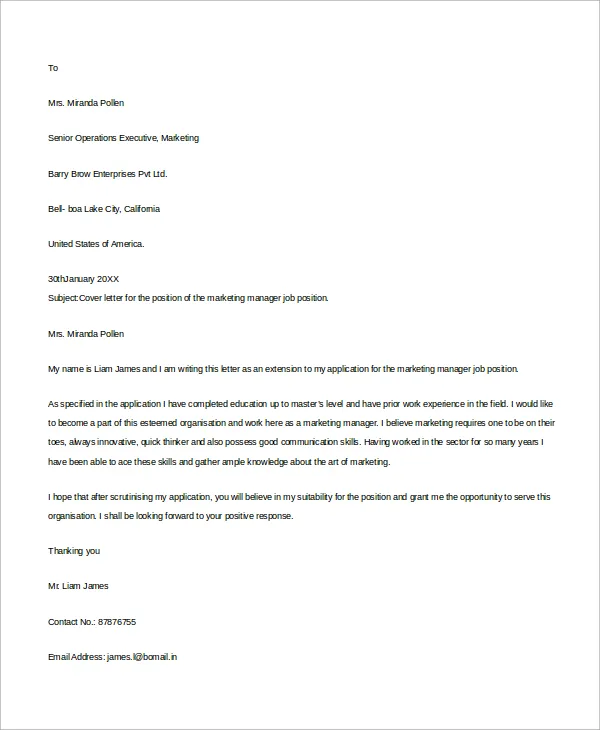
Several common mistakes can undermine your cover letter and hurt your job search. Avoid typos and grammatical errors, as these can make you appear unprofessional. Do not simply copy and paste from a template without customizing the content. Refrain from including irrelevant information or personal details that are not directly related to the job. Avoid using clichés or overly formal language. Don’t use negative language or criticize previous employers. And certainly, do not lie or exaggerate your qualifications. Be truthful and accurate in your descriptions. Taking care to avoid these common mistakes will improve the quality of your cover letter.
Proofreading and Editing Your Cover Letter
Proofreading and editing are critical steps in the cover letter writing process. Typos and grammatical errors can damage your credibility and make you appear careless. After writing your cover letter, set it aside for a few hours or even a day. Then, reread it with fresh eyes. Check for any spelling mistakes, grammatical errors, and inconsistencies in formatting. Read your letter aloud to catch any awkward phrasing or unclear sentences. Ask a friend, family member, or career counselor to review your cover letter and provide feedback. A second pair of eyes can often catch mistakes you might miss. Proofreading and editing are essential steps in ensuring that your cover letter is polished and professional.
Cover Letter Examples and Templates
Using cover letter examples and templates can be a helpful starting point for creating your own. These resources provide structure and guidance, allowing you to see how other job seekers have successfully presented their qualifications. However, it’s important to remember that you should never simply copy a template word for word. Instead, use the examples as inspiration and customize them to reflect your unique skills, experiences, and the specific requirements of the job you’re applying for. Look for examples that align with your industry and the type of position you’re seeking. Pay attention to the language, tone, and formatting used in the examples. Adapt the examples to fit your own circumstances, ensuring that your cover letter is original and reflects your personality.
Where to Find Cover Letter Templates
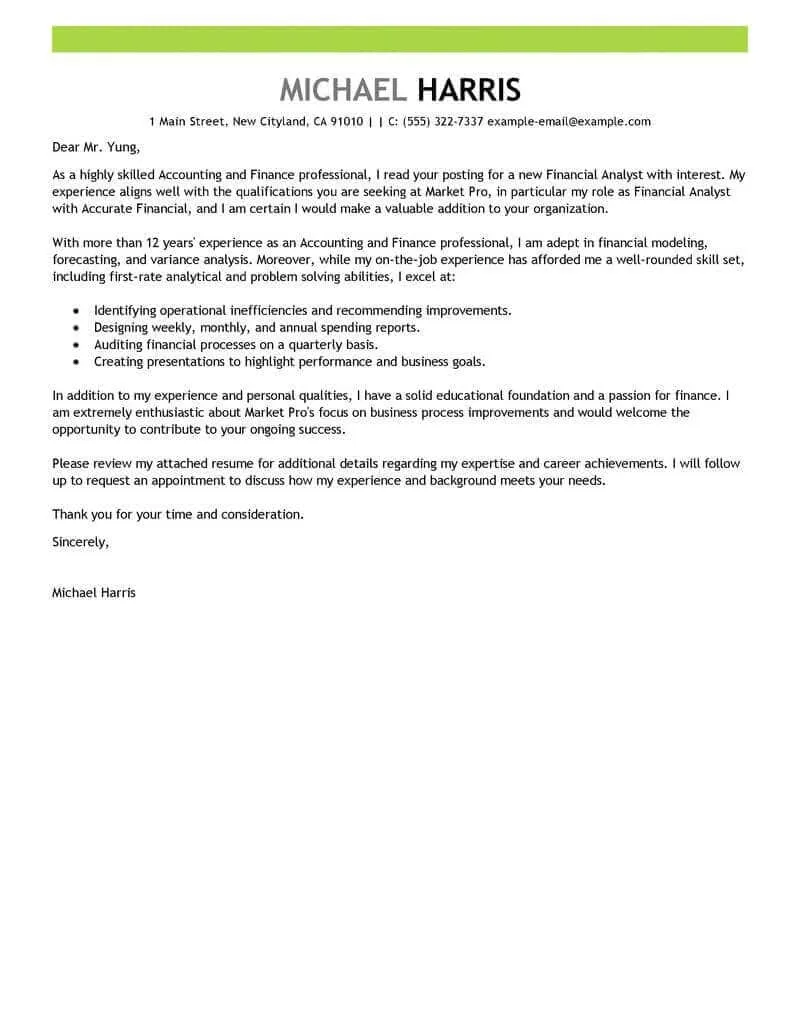
Numerous online resources offer cover letter templates that can help you get started. Websites such as Indeed, LinkedIn, and Resume.com provide a variety of free templates in various formats, including Word documents and PDFs. These templates typically include pre-written content, which you can customize to fit your needs. CareerBuilder and Monster also offer template resources. Be sure to find templates that suit your experience level and type of industry. Remember, while templates are helpful, they should serve as a starting point. Always personalize and tailor the content to reflect your skills, experiences, and the specific job you are applying for.
Using Cover Letter Examples as Inspiration
Cover letter examples can be a valuable source of inspiration and guidance. By reviewing successful examples, you can get a better understanding of how to structure your letter, what language to use, and how to highlight your qualifications effectively. When using examples, focus on the key elements: the opening, the body paragraphs, and the closing. Note how the writer tailors the letter to the specific job and company. Pay attention to the use of action verbs and how the writer quantifies their achievements. Use the examples as a guide to create a cover letter that showcases your unique skills and experiences. Remember to adapt the examples to your own circumstances and avoid simply copying and pasting content.
Submitting Your Cover Letter
When submitting your cover letter, follow the instructions provided by the employer. If the job posting specifies a certain format, file type, or method of submission, adhere to those guidelines. Save your cover letter with a clear and professional filename, such as ‘Your Name_CoverLetter_JobTitle.’ If submitting your cover letter via email, include a concise and professional subject line, such as ‘Application for [Job Title] - [Your Name].’ Ensure your cover letter is properly formatted and free of errors before attaching it to your email. If the job posting doesn’t provide specific instructions, it is always best to send your cover letter as a PDF, which preserves the formatting.
Saving Your Cover Letter Correctly
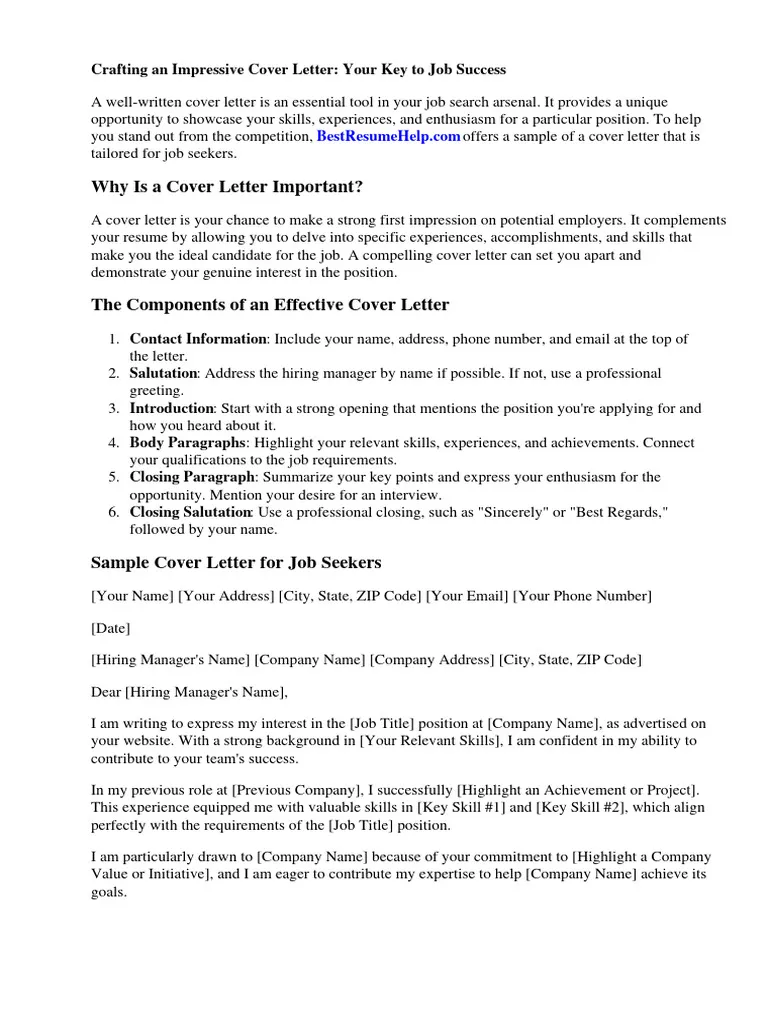
Saving your cover letter correctly is an important detail often overlooked. Use a clear and professional filename that includes your name and the job title. For example, ‘JaneDoe_CoverLetter_MarketingManager.’ Avoid generic filenames like ‘CoverLetter’ or ‘Resume.’ Save your cover letter in a widely compatible format, such as PDF, to ensure that your formatting is preserved across different devices and operating systems. This will demonstrate that you have attention to detail. Double-check the format to ensure that the file looks as intended before submitting it.
Sending Your Cover Letter via Email
When sending your cover letter via email, pay close attention to the details. Use a professional email address. Include a concise and informative subject line that clearly states the job you are applying for, such as ‘Application for Marketing Manager - Jane Doe.’ In the body of the email, include a brief greeting and reiterate your interest in the position. Attach your cover letter and resume as separate files. Ensure that your attachments are properly formatted and free of any errors. Proofread your email before sending it. A well-crafted email shows you are serious about the opportunity. If there is anything you are unsure about, it is always best to err on the side of caution and be as professional as possible.
Following Up on Your Cover Letter
Following up on your cover letter shows your enthusiasm and persistence. If you haven’t heard back from the employer within a reasonable timeframe (typically one to two weeks after submitting your application), it is acceptable to send a polite follow-up email. In your follow-up, reiterate your interest in the position and briefly mention any relevant skills or experiences. Keep the email concise and professional. Be sure to thank the hiring manager for their time and consideration. If you don’t receive a response after the follow-up, it’s generally best to move on. Following up is important. It shows that you are interested in the role and willing to go the extra mile.
The Importance of Follow-Up
Follow-up is a crucial step in the job search process. It shows the hiring manager that you are truly interested in the position and that you are proactive. A well-timed follow-up can help you stand out from other applicants and increase your chances of getting an interview. The follow-up shows the company your initiative and dedication. Make sure you follow up with the company with a polite email or phone call after you send your cover letter. Keep in mind that they are most likely very busy, so it is best to not bother them, but you can use email to ask any questions you may have.
When to Follow Up
Timing is crucial when it comes to following up on your cover letter. The ideal time to follow up is typically one to two weeks after submitting your application. Before following up, ensure that the job posting did not indicate a different timeframe. If the job posting indicates a longer waiting period, respect that. If you haven’t heard back, a polite follow-up email can be beneficial. If you are selected to be interviewed, ask them about the next steps. Following up too early can be viewed as aggressive, while following up too late might mean you have missed the opportunity. Be patient and professional, and follow up at the appropriate time.
Advanced Cover Letter Strategies
Consider these advanced cover letter strategies to gain a competitive edge. Research the company and tailor your letter to their specific needs. Quantify your achievements with data and metrics to demonstrate your impact. Use keywords from the job description throughout your letter to highlight your qualifications. Include a brief mention of your personal brand and how you align with the company’s values. Proofread your letter meticulously and ask a friend or career counselor to review it. If the job is at your dream company, it’s important to go the extra mile. Following these strategies will help you to write a strong cover letter and to get you the job!
Using Keywords in Your Cover Letter
Using keywords from the job description is a smart way to make your cover letter more effective. Carefully review the job posting and identify the key skills, qualifications, and requirements the employer is seeking. Then, incorporate those keywords into your cover letter. This is important because many companies use applicant tracking systems (ATS) to screen resumes and cover letters. These systems scan for specific keywords, and if your letter doesn’t contain the right words, it may be overlooked. Naturally integrate the keywords into your sentences. Be careful not to overstuff your letter with keywords, as it can make it appear robotic and unnatural.
Addressing Common Cover Letter Challenges
There are several common challenges job seekers face when writing cover letters. One challenge is how to address a gap in employment. In your cover letter, address your gap in employment as honestly as you can. Another challenge is how to write a cover letter when you have no prior experience. Highlight your skills and educational background. Also, be sure to showcase any volunteer experience and your personal qualities. Another challenge is tailoring your letter to a specific job description. Always read the job description. Remember, a cover letter is meant to showcase your skills, your experience, and yourself. Addressing these challenges will help you to write an effective cover letter.
Cover Letter for Career Changers
For career changers, the cover letter is a crucial tool for highlighting transferable skills and explaining the rationale for the career shift. In your cover letter, clearly state your career change and the reasons behind it. Focus on the transferable skills you possess that align with the new role. Provide specific examples of how you have demonstrated those skills in previous roles. Show your enthusiasm for the new industry and demonstrate your willingness to learn. Tailor your letter to each job, emphasizing the skills and experiences most relevant to that particular position. This shows the hiring manager that you’ve taken the time to understand their needs and that you’re a good fit for the role.
Cover Letter for Recent Graduates
For recent graduates, the cover letter provides an opportunity to showcase academic achievements, extracurricular activities, and any relevant internships or volunteer experiences. In your cover letter, highlight your educational background. Mention any relevant coursework or projects that align with the job requirements. Emphasize any internships, volunteer work, or part-time jobs. Use the STAR method (Situation, Task, Action, Result) to describe your accomplishments. Show your enthusiasm for the opportunity and express your willingness to learn and contribute. Highlight your transferable skills and academic achievements. Make your cover letter stand out by demonstrating how you have the qualities needed for the job.
